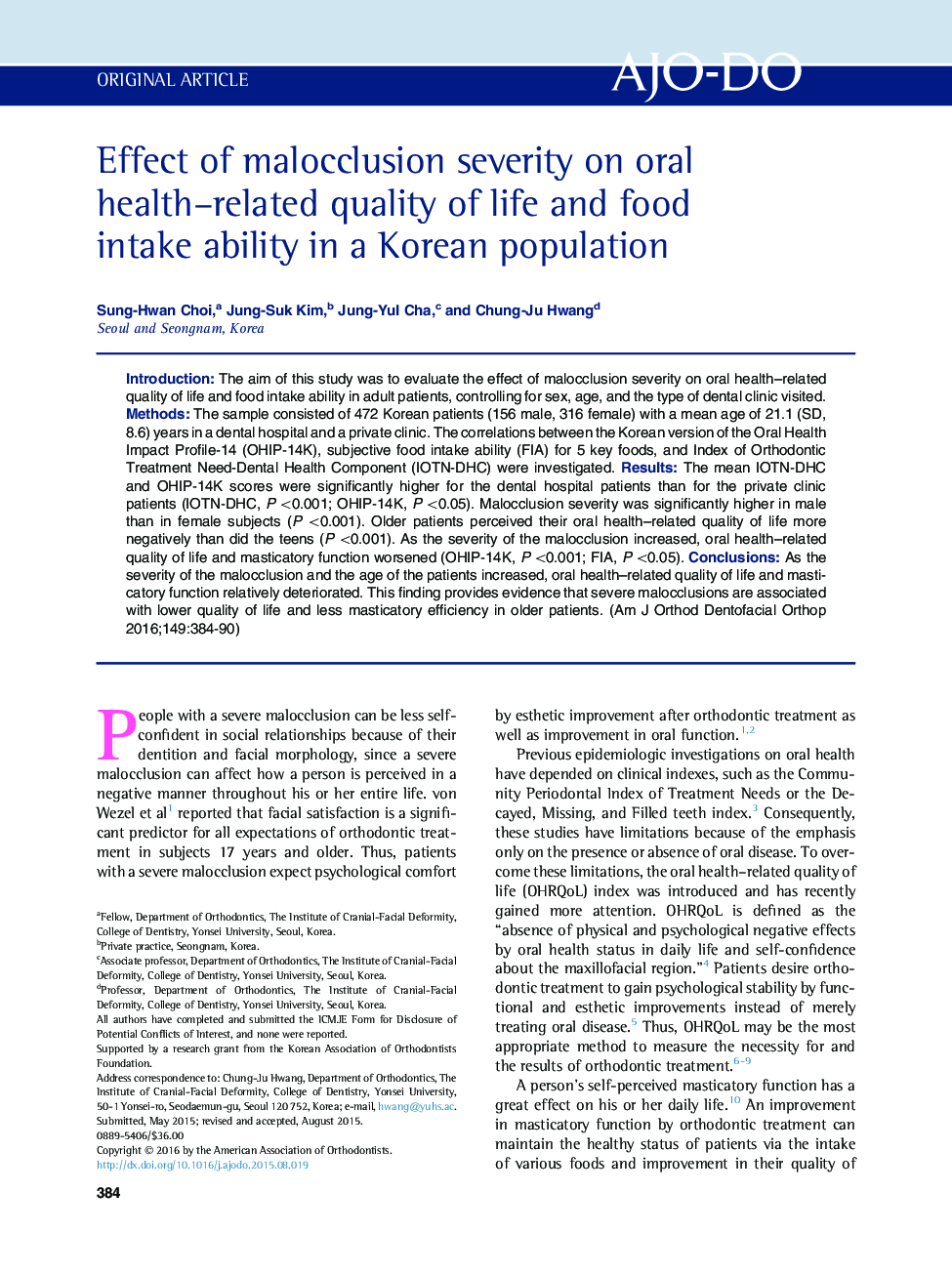| Article ID | Journal | Published Year | Pages | File Type |
|---|---|---|---|---|
| 3115514 | American Journal of Orthodontics and Dentofacial Orthopedics | 2016 | 7 Pages |
•Malocclusion severity was compared in private practice and dental hospital patients.•Malocclusions were more severe in dental hospital patients (P <0.001).•Masticatory efficiency was decreased in older patients, particularly those in their 30s.•Negative perceptions of oral health–related quality of life (OHRQoL) were increased in older patients.•As malocclusion severity increased, OHRQoL worsened and masticatory efficiency fell.
IntroductionThe aim of this study was to evaluate the effect of malocclusion severity on oral health–related quality of life and food intake ability in adult patients, controlling for sex, age, and the type of dental clinic visited.MethodsThe sample consisted of 472 Korean patients (156 male, 316 female) with a mean age of 21.1 (SD, 8.6) years in a dental hospital and a private clinic. The correlations between the Korean version of the Oral Health Impact Profile-14 (OHIP-14K), subjective food intake ability (FIA) for 5 key foods, and Index of Orthodontic Treatment Need-Dental Health Component (IOTN-DHC) were investigated.ResultsThe mean IOTN-DHC and OHIP-14K scores were significantly higher for the dental hospital patients than for the private clinic patients (IOTN-DHC, P <0.001; OHIP-14K, P <0.05). Malocclusion severity was significantly higher in male than in female subjects (P <0.001). Older patients perceived their oral health–related quality of life more negatively than did the teens (P <0.001). As the severity of the malocclusion increased, oral health–related quality of life and masticatory function worsened (OHIP-14K, P <0.001; FIA, P <0.05).ConclusionsAs the severity of the malocclusion and the age of the patients increased, oral health–related quality of life and masticatory function relatively deteriorated. This finding provides evidence that severe malocclusions are associated with lower quality of life and less masticatory efficiency in older patients.
